Your Guide to the UK’s Pre-Decimal Currency
If you were born after the UK’s coinage system turned decimal, or it’s simply been a while since you’ve thought about pre-decimal coinage, it can be a bit confusing!

From the farthing, to the Thrup’nny bit, there’s a lot of coins to get your head around. So, Change Checker is on hand with your guide to the UK’s pre-decimal currency!
The Farthing
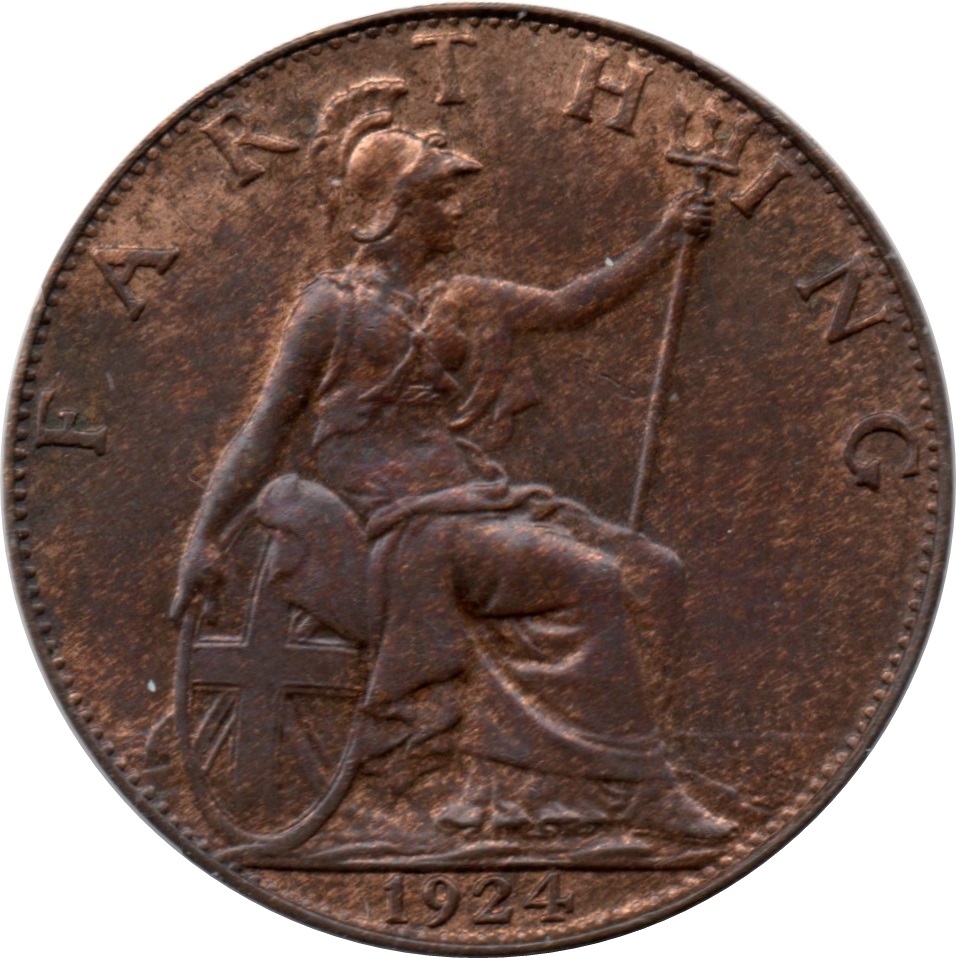
The farthing equaled that of a quarter of a penny and it was issued for circulation for nearly 100 years (1860-1956).
This small but significant coin featured the portraits of 11 monarchs, including George I, Queen Victoria, and Queen Elizabeth II.
Half Penny
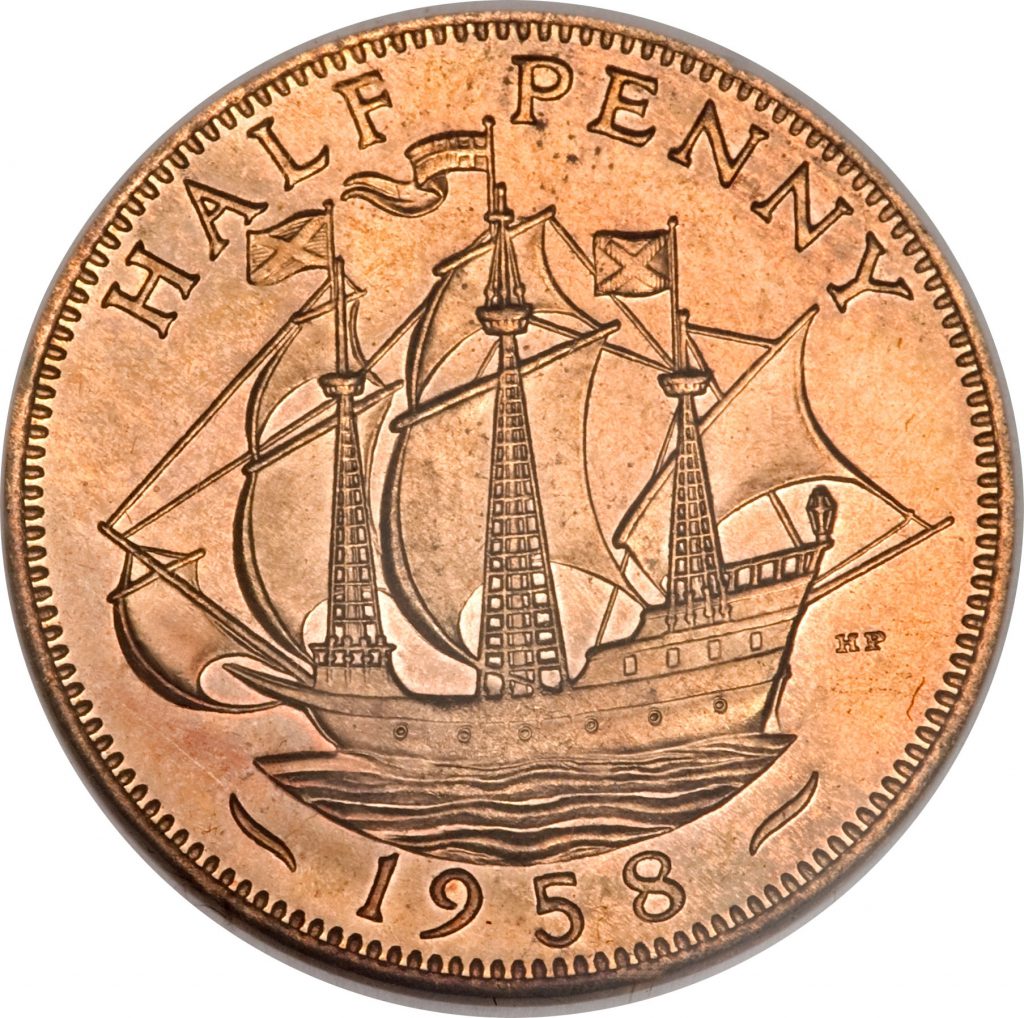
Suggestive of its name, the half penny was worth, literally half of a penny in value. Two farthings would therefore make a half penny!
The last half penny issued for circulation was dated 1967.
Penny

The pre-decimal One Penny, also known as 1d, held a lot less value than the modern ‘New’ Penny – there were 240 pennies in a pre-decimal pound!
They were used in circulation from 1714 and the last One Penny was struck in 1967, before the introduction of the ‘New’ Penny in 1971.
Threepence
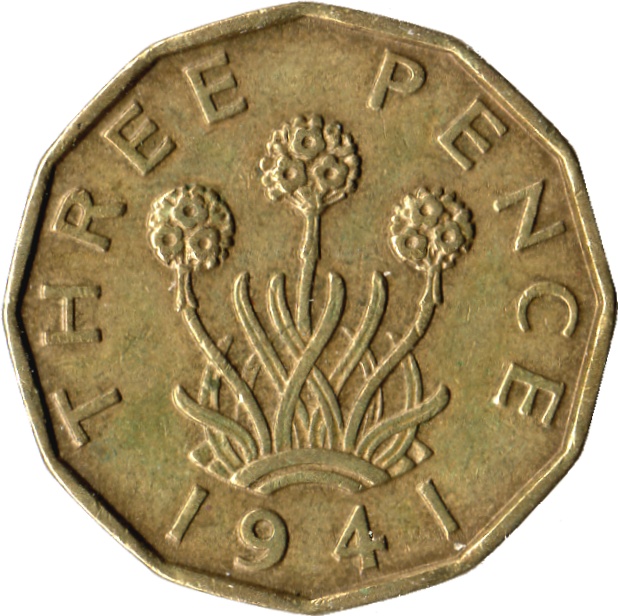
The 12-sided threepenny (or 3d) is fondly remembered for its individuality. There was quite literally nothing quite like it before, and it holds the proud title of Britain’s first non-circular coin since milled coins were introduced in the 17th century.
The unconventional shape and thickness of the new brass Thrup’nny Bit made it easy to identify amongst other coins in loose change and it quickly proved to be a very popular new addition.
Alongside this brass version of the threepenny, a silver 3d also circulated through the reign of King George V. It even sometimes circulated alongside the brass coin!
Its name derived from it’s value, being equal to exactly three pennies.
Sixpence
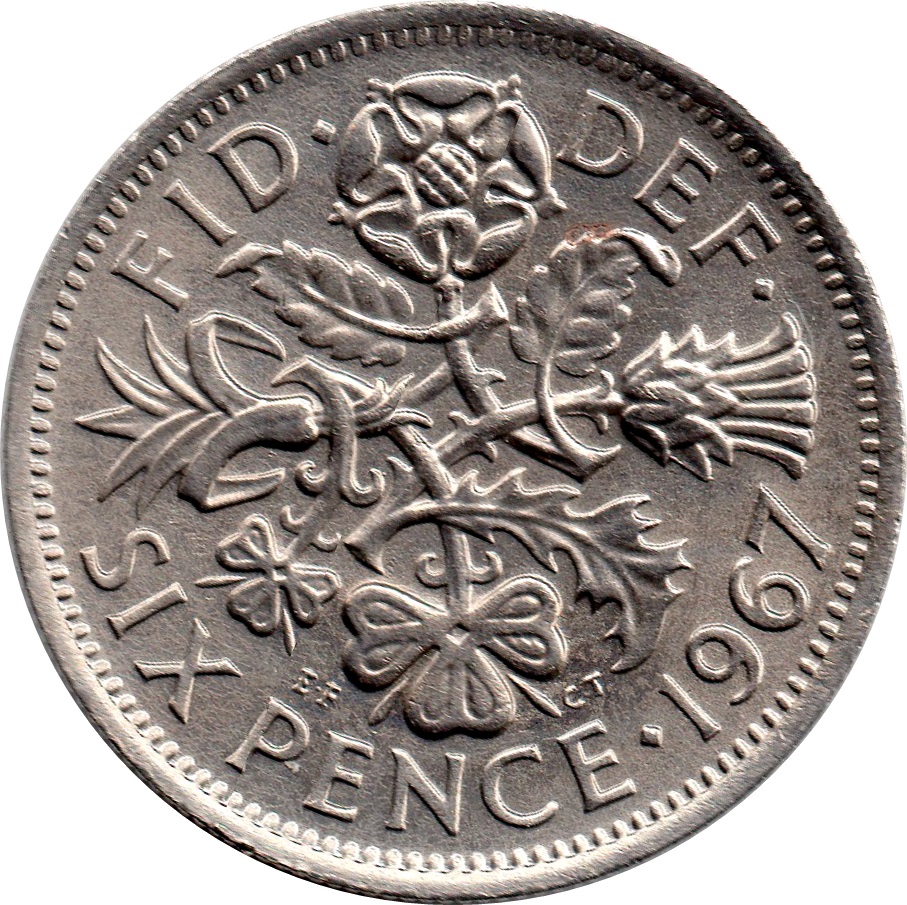
Also called a ‘Tanner’ the sixpence was equivalent to one-fortieth of a pound sterling, or half a shilling.
It was first minted in 1551, during the reign of Edward VI, and circulated until 1980.
Throughout centuries, the sixpence has been considered lucky, with fathers slipping one into their daughter’s shoe on their wedding day, and families hiding one in their Christmas pudding, in the hope it would bring prosperity and good fortune.
The sixpences continued to be legal tender until 1980 with a value of 2 and a half new pence. The public were so fond of the sixpence, that there was even a ‘Save Our Sixpence’ campaign!
Shilling
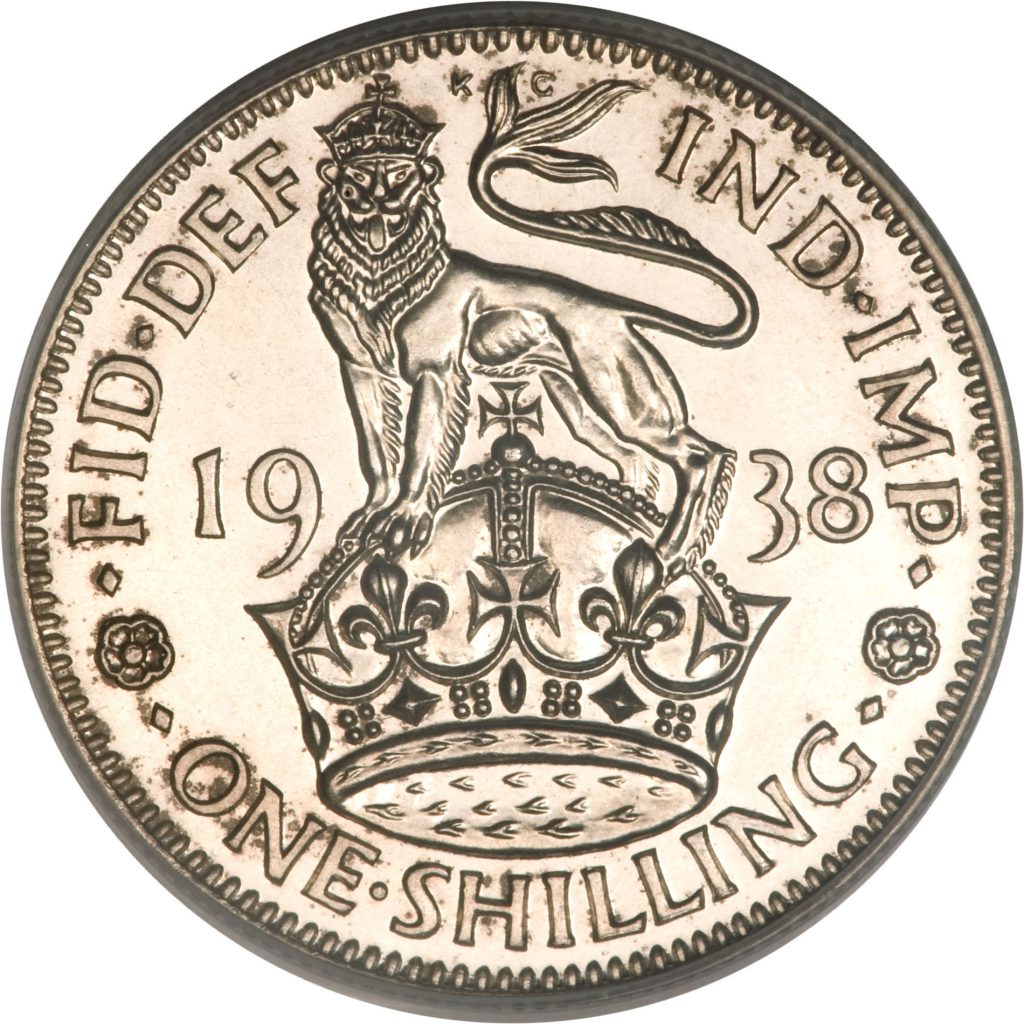
A shilling (or 1/-) was worth 12 pennies and there were 20 in the pre-decimal pound sterling.
The shilling was technically replaced by the five new pence in 1968 in preparation for the decimal changeover in 1971 but they were used as five pence pieces until the 5p was made smaller in 1990.
Florin
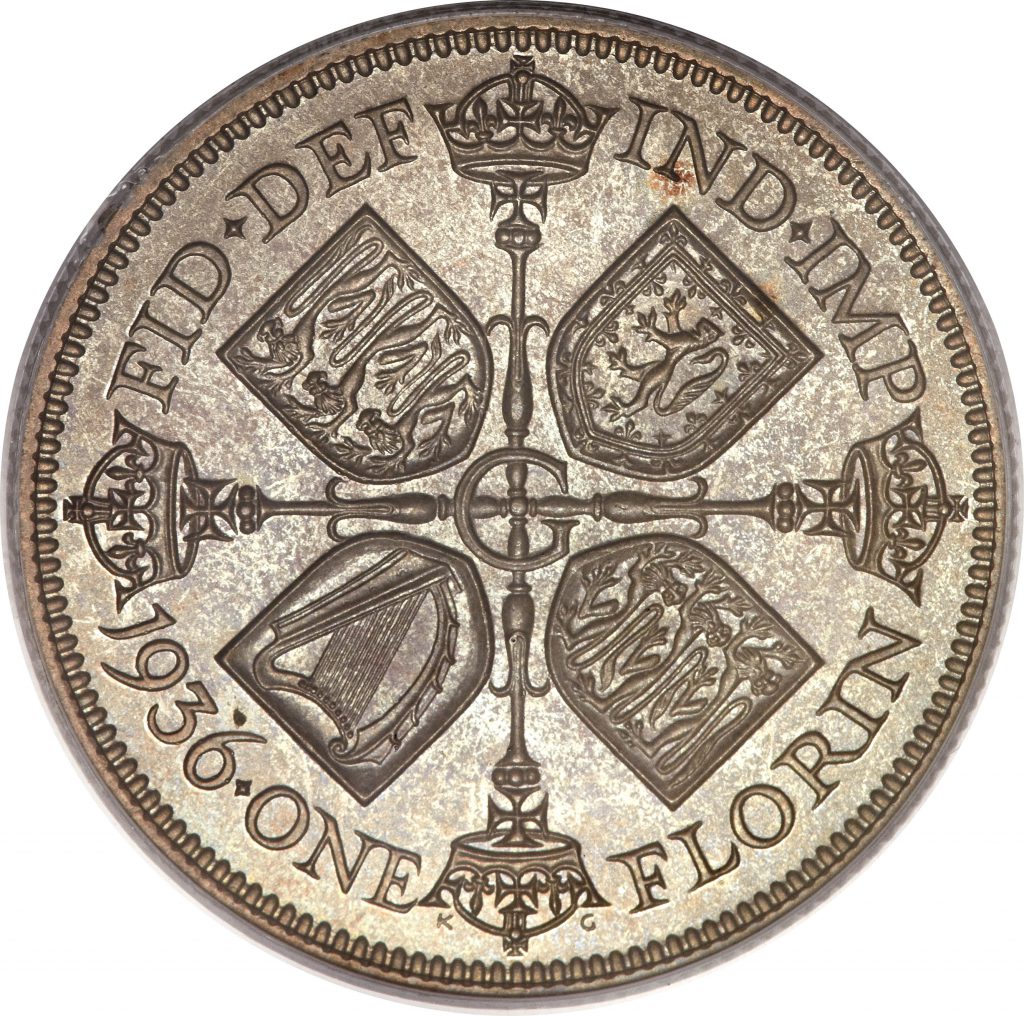
The Florin (or Two Shillings, 2/-) was worth 24 pre-decimal pence or two shillings. It was introduced by Victorians in a step towards decimalisation because it was worth one tenth of a pre-decimal pound sterling.
The last Florin intended for circulation was dated 1967 but these coins were used as Ten new pence until the 10p was made smaller in 1990.
Half Crown
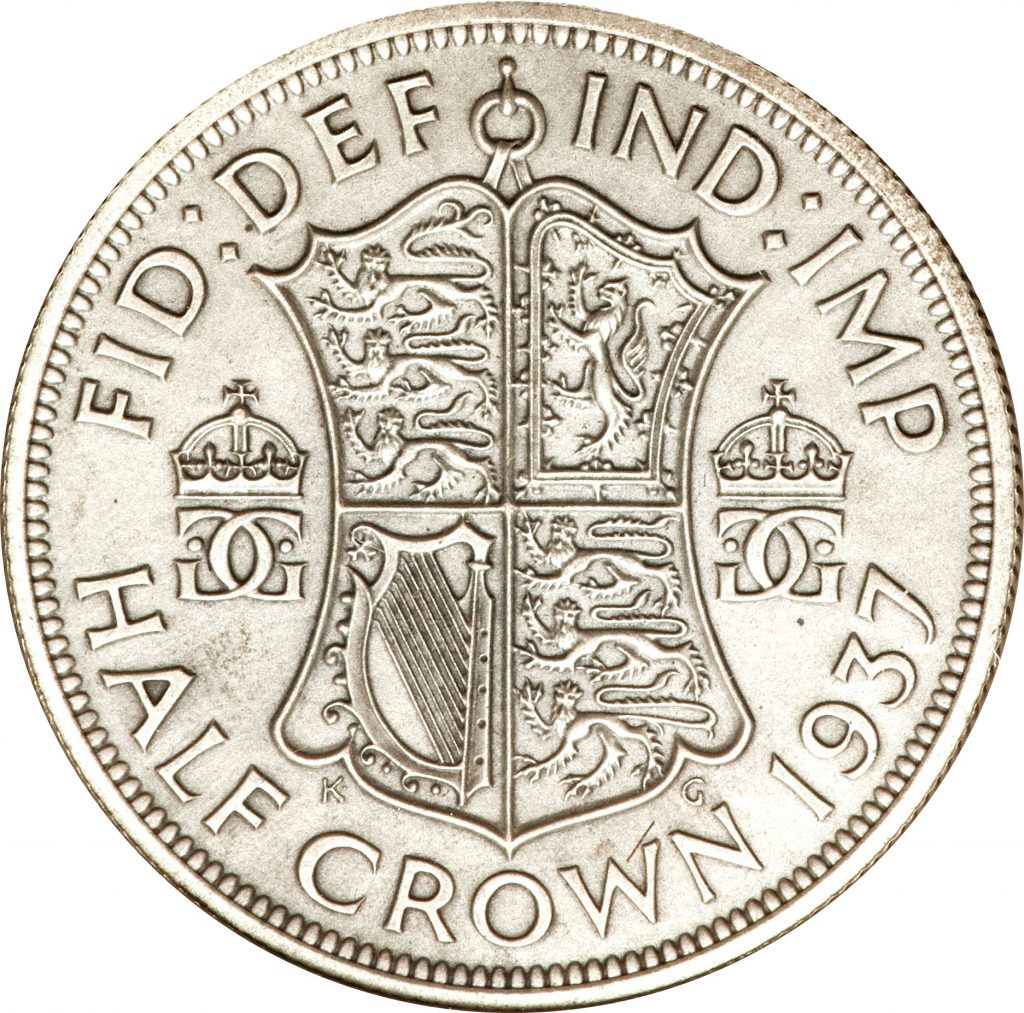
The Half Crown (2/6) was worth 30 pre-decimal pence (or two shillings and sixpence). There were eight Half Crowns in a pound sterling.
The last crown for circulation was dated 1967.
Crown
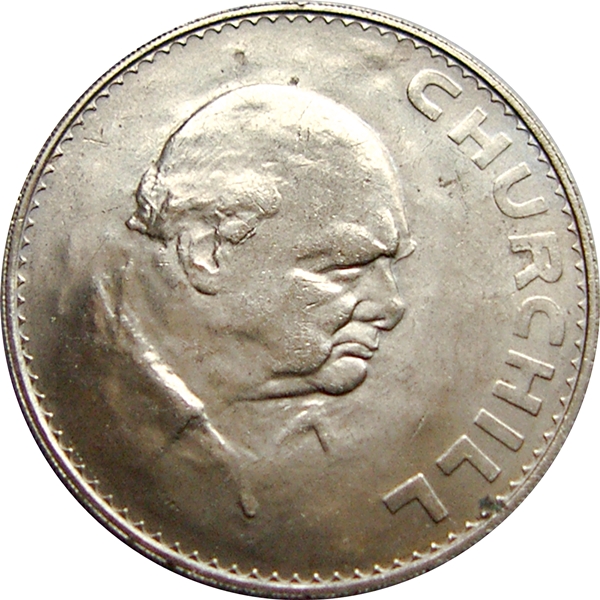
The English crown was introduced by order of King Henry VIII in 1544 but it wasn’t until 1707 that we saw the British crown. It was the successor to the English crown and the Scottish dollar, and it came into being with the Union of Kingdoms of England and Scotland.
It was worth 60 pre-decimal pence or 1/4 of a pound sterling. The legal tender value of the crown remained as 25p until 1990 when their face value was increased to £5 in view of its relatively large size compared to other coins.
With its large size, many of the later coins were primarily commemoratives. The 1965 issue carried the image of Winston Churchill on the reverse, the first time a non-monarch or commoner was ever placed on a British coin, and marked his death.
In 2010, Crowns (£5) were no longer available from banks or post offices and other distributors for face value. They are now reserved for significant anniversaries, birthdays or celebrations and are available to purchase from The Royal Mint and other distributors.
Half Sovereign and Sovereign
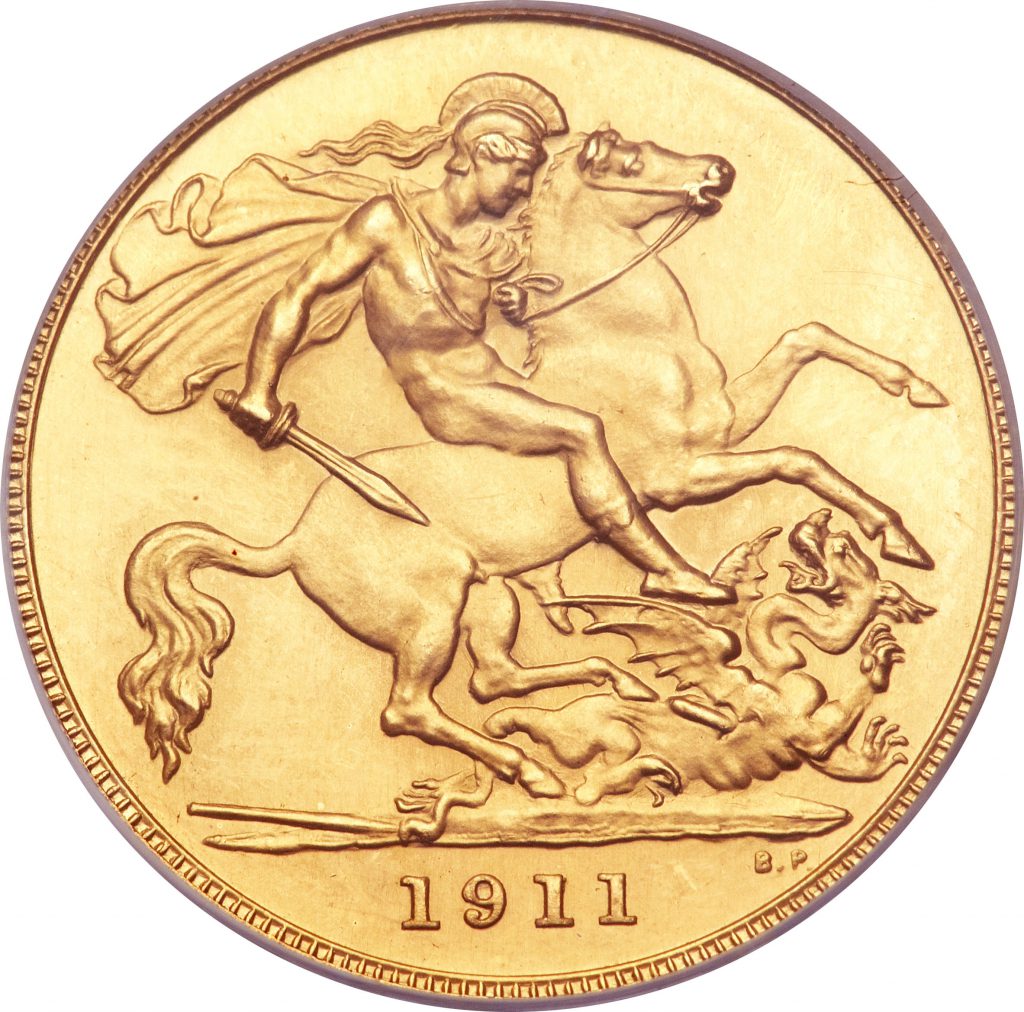
Sovereigns had a face value of 20 Shillings (or one pound) and Half Sovereigns of 10 Shillings. As they are made of 22ct Gold, they have a much higher metal value and have not been used as currency in recent years due to this.
Sovereigns are now reserved for flagship royal or historical anniversaries and are only available to purchase from The Royal Mint or official distributors.
Now that you’ve read your guide to the UK’s pre-decimal currency, do you have a favourite coin from the ones we’ve mentioned? Let us know in the comments below!
Secure the Complete Decimalisation Coin Collection & Display Card for JUST £30.00 (+p&p)
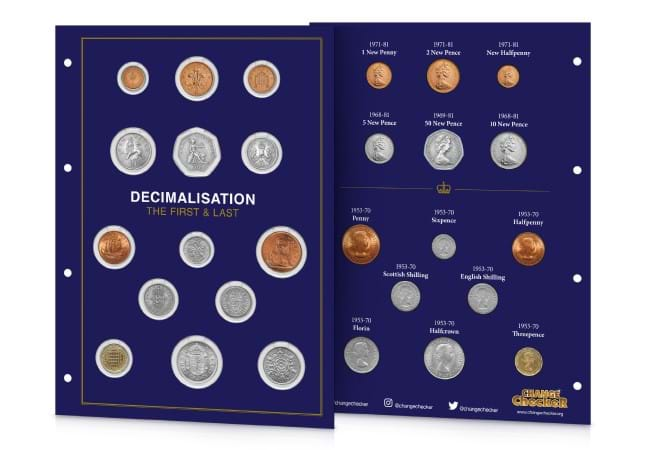
2021 will mark 50 years since this pivotal moment in British history and so in tribute, Change Checker has issued this Complete Decimalisation Set.
It includes the 14 coins which were affected by the decimal changeover on ‘D-Day’ in 1971 and makes for the perfect heirloom for any aspiring collector, or for those interested in the heritage of British coins.
Secure yours here for JUST £30.00 (+p&p) >>

The “Crown” (25p) was last issued in 1981 (Royal Wedding of Prince Charles and Lady Diana Spencer) and is still legal tender for that amount. The Five Pound coins issued since 1990 use the same specifications of size, weight and composition, but pre 1990 “crowns” were not revalued to be now worth £5!
Liked the farthing with wren on reverse!
My Favourite coin was the THREEPENCE one and I still have a collection of them, including some with a hole in the top so that they could be included on a Bracelet ready for my Girlfriend to wear, but she had given me up for another guy before I could give it to her as a present.
Its still in my drawer, just as a rememberance of those times ,when love was YOUNG.!!!!!!!
Born in 1941 I well remember the ” Old Money ” and older people post `71 trying to convert the new coinage to work out the value of an item!
Many people often referred to the Half Crown as a Half a Dollar and the One Shilling as a ” Bob ” as in
Burtons the Men`s Outfitters was known as the ” Fifty Bob Tailors ” ( £2.50 )
I keep two ,one shilling coins in my wallet, that means I’ll always have money lol. 1927 and 1936.
Hello interested in reading about my growing up years with Pounds shillings and pence, but I have one that is not mentioned, it is a 1/3rd of a farthing.
The little bronze Third Farthings were minted until 1913 only for use in Malta. They used British coinage even after they had independence and right up until they went decimal in 1972.
Anyone know how much the Churchill crown is worth today
Hi Jonathan,
Thanks for your comment! Unfortunately Change Checker is unable to provide valuations for coins but you can use our guide to help you value it yourself: https://www.changechecker.org/2018/08/02/could-i-be-minted-the-6-point-guide-to-valuing-your-coin/
Thanks,
Alex
HI
HOW ABOUT A CHANGE CHECKER SWAP SITE FOR PRE-DECIMAL UK COINS, I HAVE IN THE PAST SWAPPED STERLING FOR DECIMAL ON THE SITE, I THINK IT WOULD BE A SUCCESS. THERE ARE SO MANY VARIATIONS OF THE PRE-DECIMAL FOR INSTANCE THE SHILLING HAS SCOTTISH AND ENGLISH COINS, AND OF COURSE MINT MARKS, JUST A THOUGHT.
Hi James,
Thanks for this suggestion! We’re currently in the process of updating our app so we value your feedback.
Best regards,
Alex
Very good as far as it goes. Could you also please do a guide to the rarest and most valuable pre-decimal coins?
Hi Tim,
Good suggestion! We’ll consider this for a future blog
Thanks,
Alex